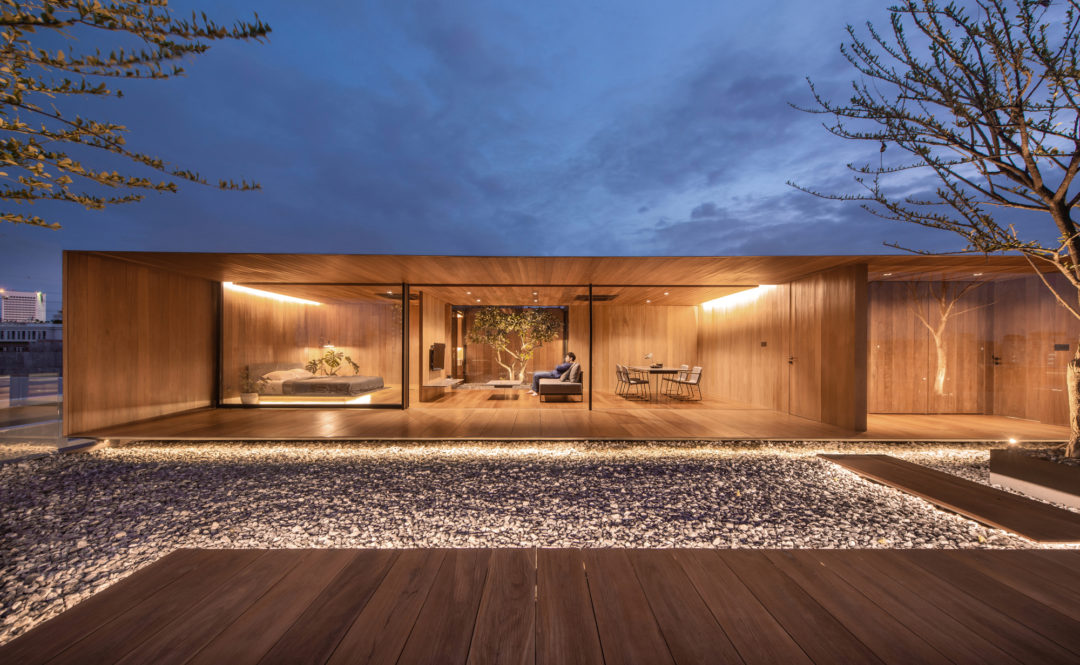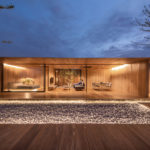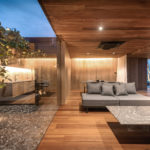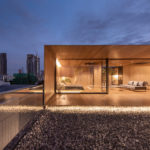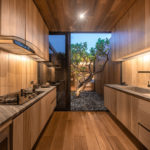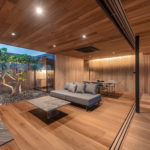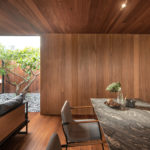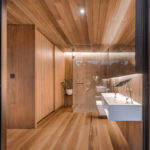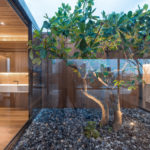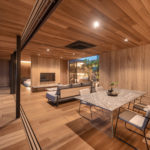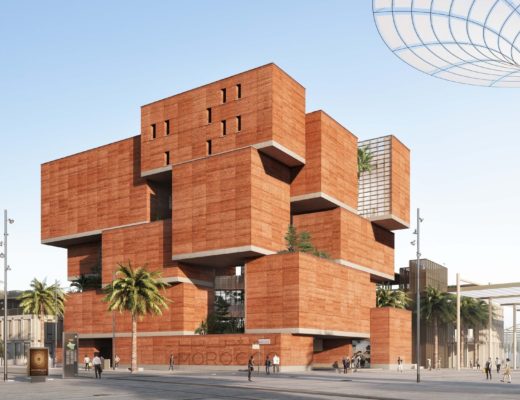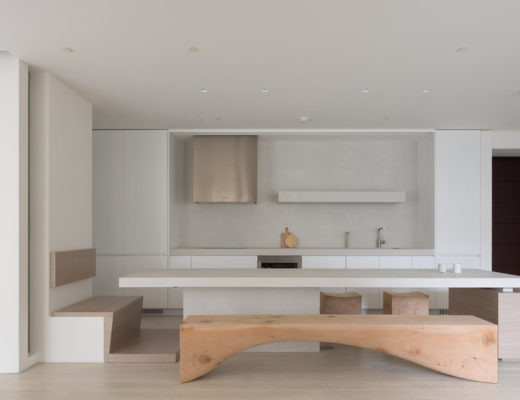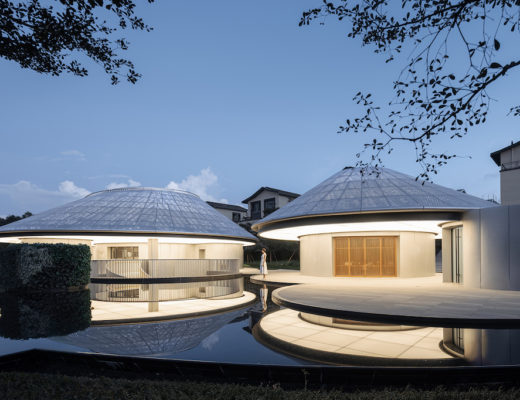Located in Thai capital’s Lat Phrao district close to the well-known Chatuchak market, the rooftop of this five-storey building was used to store water tanks, leaving a lot of empty space. The owner decided to optimise the space and build a house on top. The 150m2 boxy wooden structure features a front façade which can’t be seen from the outside to avoid creating a stark contrast between this house and the apartment below.
“Our idea was not to make this house feel like a building but to free it from form. We wanted it to be just a borderless box that emerges out of nowhere in the sky, as if the thickness of the wall and roof were non-existent, but still able to make holes in the ceiling to install curtains, air conditioners, and embed lights,” says the team comprised of architects Thawin Harnboonseth and Photsawat Apariman from WARchitect. “Our intention was to give an illusion to onlookers that the entire ceiling was in the same straight line even though we featured a drop ceiling and a slope that was intentionally used to make the wall and ceiling look thin. These techniques may not be new in architecture. However, with this rooftop house, it is more special since a short distance between the main structure and the exterior helps disguise the techniques we used.”
The owner wanted the house to be simple for his private use as he does not receive guests frequently. The boundary between each room is linked by a courtyard. The functional area is divided according to the grid of the apartment’s pillars underneath, resulting in a six-grid layout.
The front section consists of three grids which are used as a dining area, living room, and bedroom, which afford a panoramic view through a large sliding glass door. Upon closing the glass door, the door frame aligns behind a small pillar, giving an impression that the structure doesn’t have any pillars. The back section consists of the remaining three grids which are used as bathrooms, courtyard that can be seen from anywhere in the house, and kitchen.
“Since the owner already had a large number of Balau wood planks, we used them as the covering material. Even some planks have defects such as cracks, gnarls, marks from saws, and uneven colors, we see them as a natural charm of real wood, so we did not need to discard any of them. When the construction was finished, the final result is a “space” completed with the warm colour of the wood and the cool tone of the sky, just exactly as we wanted it to be,” explains the team.
Images courtesy: Rungkit Charoenwat

